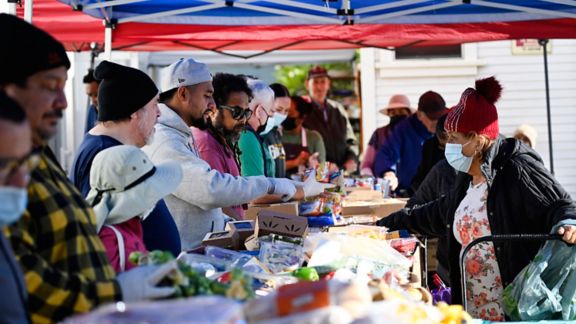Telehealth Experiences among Californians with Low Incomes

Problem
More people are using telehealth, but their experiences with virtual care are not well understood.
Since the beginning of the COVID-19 pandemic, telehealth has increasingly become an important part of the health care delivery system, driven by the need for reduced in-person contact, by changes to reimbursement, and by patient preference. As telehealth’s role in health care has grown and continues to evolve, it is important to ensure that all Californians have access to and satisfactory experiences with telehealth. The California Health Care Foundation (CHCF) is dedicated to research and funding to enhance California’s public health care programs and services. To better understand the telehealth experiences of Californians with low incomes, CHCF engaged NORC to recruit and interview Californians with low incomes who reflect the diversity of the state.
Solution
NORC conducted in-depth interviews to understand telehealth experiences of Californians with low incomes.
NORC conducted CHCF’s Telehealth Experiences Study between July 22 and November 28, 2022, interviewing 73 Californians to gain an understanding of their telehealth experiences since the start of the COVID-19 pandemic. All study participants lived in California, had annual household incomes below 200 percent of the FPL, and had a telehealth appointment within the last year. A telehealth appointment was defined as a visit with a primary care doctor, specialist, therapist, nurse practitioner, or other medical professional via video or a phone call. Of the 73 interviews, 51 were conducted in English, 10 in Spanish, 6 in Cantonese, and 6 in Vietnamese. Three of the English interviews were conducted with adolescents between the ages 14 and 17.
Result
Californians with low incomes want telehealth to remain an integral part of their care.
Our study found that:
- Telehealth increases access to care for many Californians with low incomes.
- Telehealth helps patients build stronger relationships with their providers.
- Californians with low incomes want telehealth to play an integral role in their care in the future.
- Patients want to be actively involved in the decisions about the modality of their visits to best meet their needs (i.e., phone or video, in person or telehealth).
For populations with specific health care needs, there are some trade-offs associated with video vs. phone telehealth visits. Those who had digital access and comfort with technology preferred video appointments, but many also saw the value of phone visits for convenience and preferred this for follow-up or medication management care.







